Abstract
Transverse muscle strips, 2-mm wide, were cut serially from the gastroduodenal junction in opossums, cats, dogs, and man. Electrical field stimulation with trains of rectangular current pulses of 0.5 ms in all opossums, all cats, some dogs, and the one human specimen induced relaxation in strips from the thickened circular muscle proximal to the mucosal junction. In some opossums weak relaxations also occurred in the first few strips below the mucosal junction. All other strips contracted or showed no response. This relaxation in opossums was abolished by tetrodotoxin but was not affected by antagonists to adrenergic and cholinergic transmission, nor by tripelennamine, methysergide, pentagastrin, secretin, cerulein, or cholecystokinin. Optimal frequency for stimulus-relaxation was 12 Hz. Chronaxie was 0.85 ms. The junctional strips also showed greater resistances to stretch than those remote from the junction. With apparent species variations, the junctional muscle possesses a nonadrenergic inhibitory innervation which is either absent or unexpressed in adjacent muscle of stomach and duodenum. This suggests the existence of a distinctive inhibitory neural control mechanism for pyloric muscle.
Full text
PDF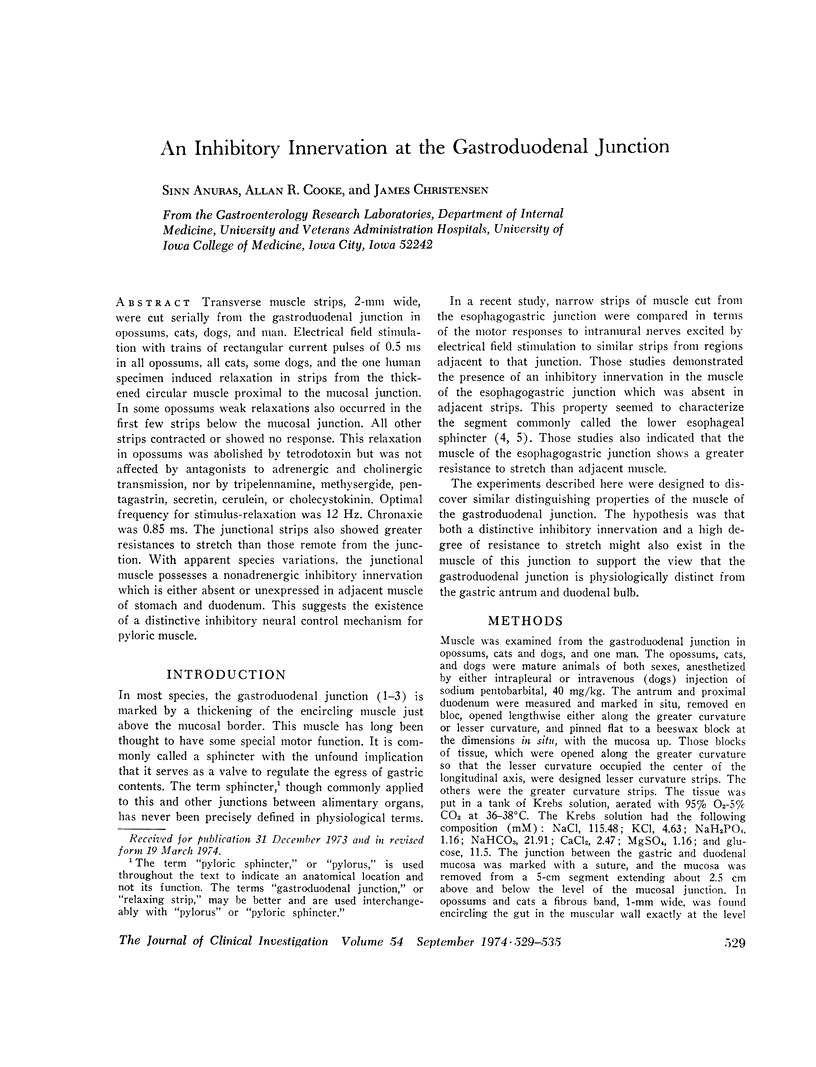
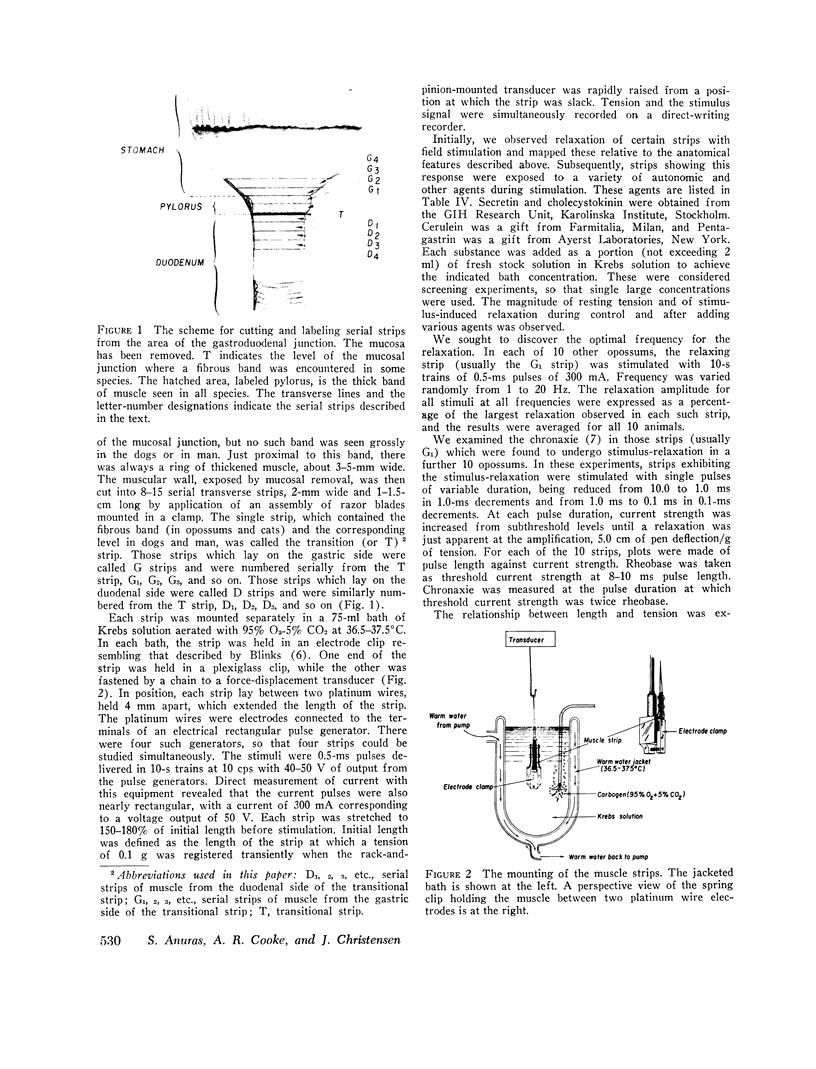
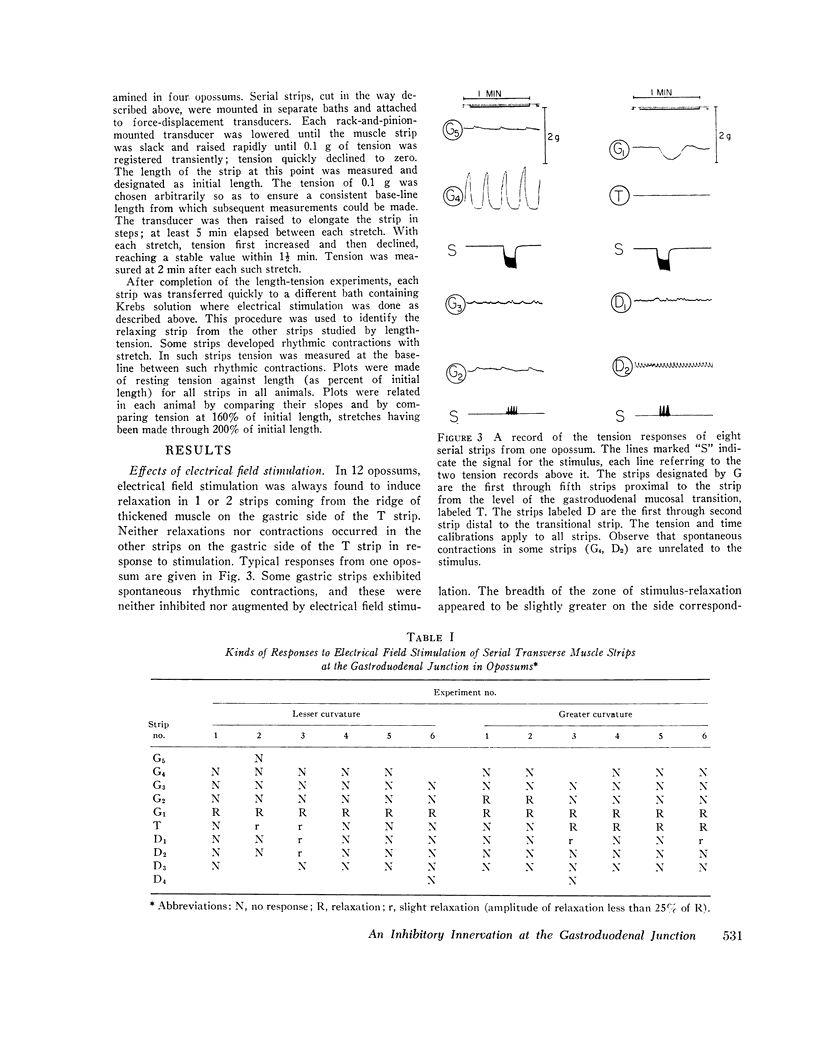
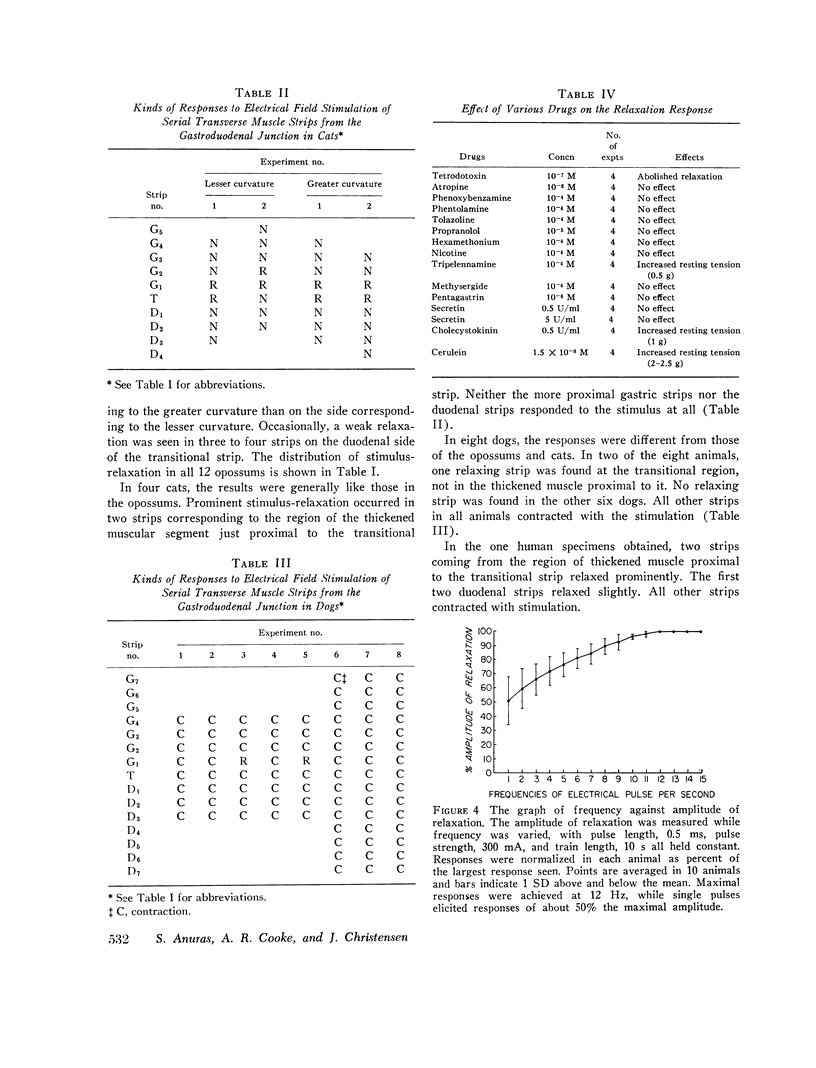
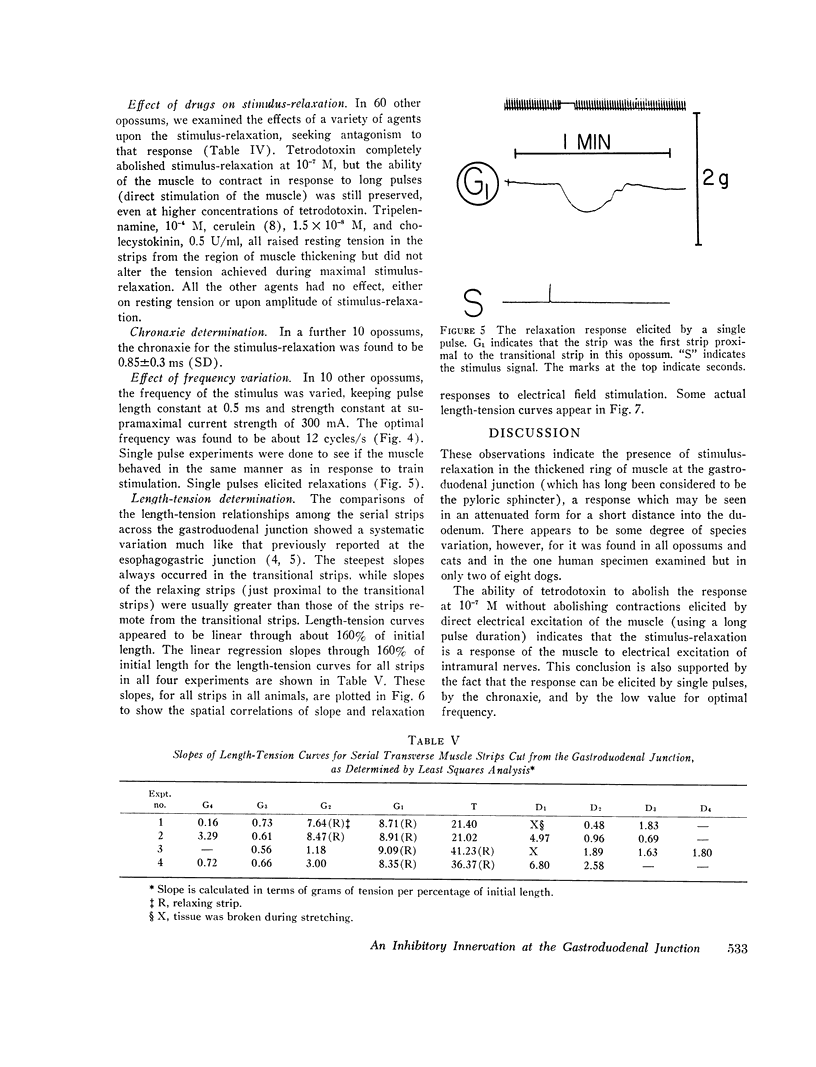
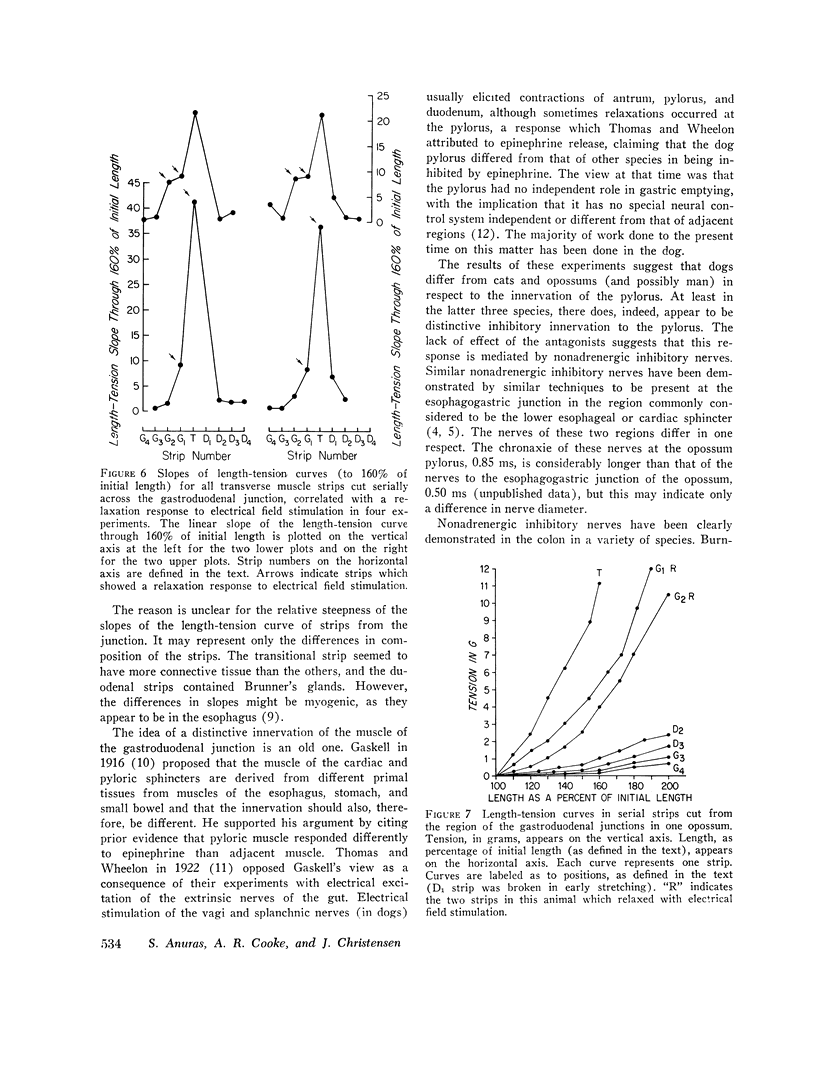
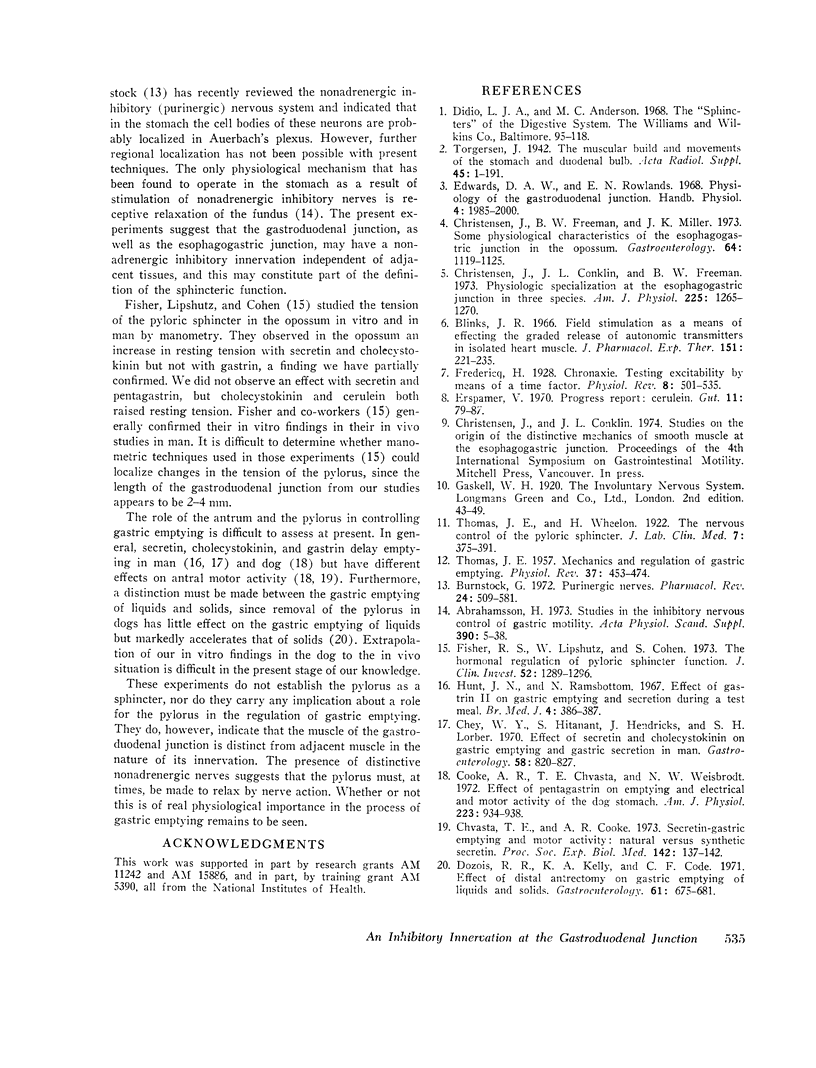
Images in this article
Selected References
These references are in PubMed. This may not be the complete list of references from this article.
- Abrahamsson H. Studies on the inhibitory nervous control of gastric motility. Acta Physiol Scand Suppl. 1973;390:1–38. [PubMed] [Google Scholar]
- Blinks J. R. Field stimulation as a means of effecting the graded release of autonomic transmitters in isolated heart muscle. J Pharmacol Exp Ther. 1966 Feb;151(2):221–235. [PubMed] [Google Scholar]
- Burnstock G. Purinergic nerves. Pharmacol Rev. 1972 Sep;24(3):509–581. [PubMed] [Google Scholar]
- Chey W. Y., Hitanant S., Hendricks J., Lorber S. H. Effect of secretin and cholecystokinin on gastric emptying and gastric secretion in man. Gastroenterology. 1970 Jun;58(6):820–827. [PubMed] [Google Scholar]
- Christensen J., Conklin J. L., Freeman B. W. Physiologic specialization at esophagogastric junction in three species. Am J Physiol. 1973 Dec;225(6):1265–1270. doi: 10.1152/ajplegacy.1973.225.6.1265. [DOI] [PubMed] [Google Scholar]
- Christensen J., Freeman B. W., Miller J. K. Some physiological characteristics of the esophagogastric junction in the opossum. Gastroenterology. 1973 Jun;64(6):1119–1125. [PubMed] [Google Scholar]
- Chvasta T. E., Cooke A. R. Secretin-gastric emptying and motor activity: natural versus synthetic secretin. Proc Soc Exp Biol Med. 1973 Jan;142(1):137–142. doi: 10.3181/00379727-142-36976. [DOI] [PubMed] [Google Scholar]
- Cooke A. R., Chvasta T. E., Weisbrodt N. W. Effect of pentagastrin on emptying and electrical and motor activity of the dog stomach. Am J Physiol. 1972 Oct;223(4):934–938. doi: 10.1152/ajplegacy.1972.223.4.934. [DOI] [PubMed] [Google Scholar]
- Dozois R. R., Kelly K. A., Code C. F. Effect of distal antrectomy on gastric emptying of liquids and solids. Gastroenterology. 1971 Nov;61(5):675–681. [PubMed] [Google Scholar]
- Erspamer V. Progress report: caerulein. Gut. 1970 Jan;11(1):79–87. doi: 10.1136/gut.11.1.79. [DOI] [PMC free article] [PubMed] [Google Scholar]
- Fisher R. S., Lipshutz W., Cohen S. The hormonal regulation of pyloric sphincter function. J Clin Invest. 1973 May;52(5):1289–1296. doi: 10.1172/JCI107297. [DOI] [PMC free article] [PubMed] [Google Scholar]
- Hunt J. N., Ramsbottom N. Effect of gastrin II on gastric emptying and secretion during a test meal. Br Med J. 1967 Nov 18;4(5576):386–387. doi: 10.1136/bmj.4.5576.386. [DOI] [PMC free article] [PubMed] [Google Scholar]
- THOMAS J. E. Mechanics and regulation of gastric emptying. Physiol Rev. 1957 Oct;37(4):453–474. doi: 10.1152/physrev.1957.37.4.453. [DOI] [PubMed] [Google Scholar]



